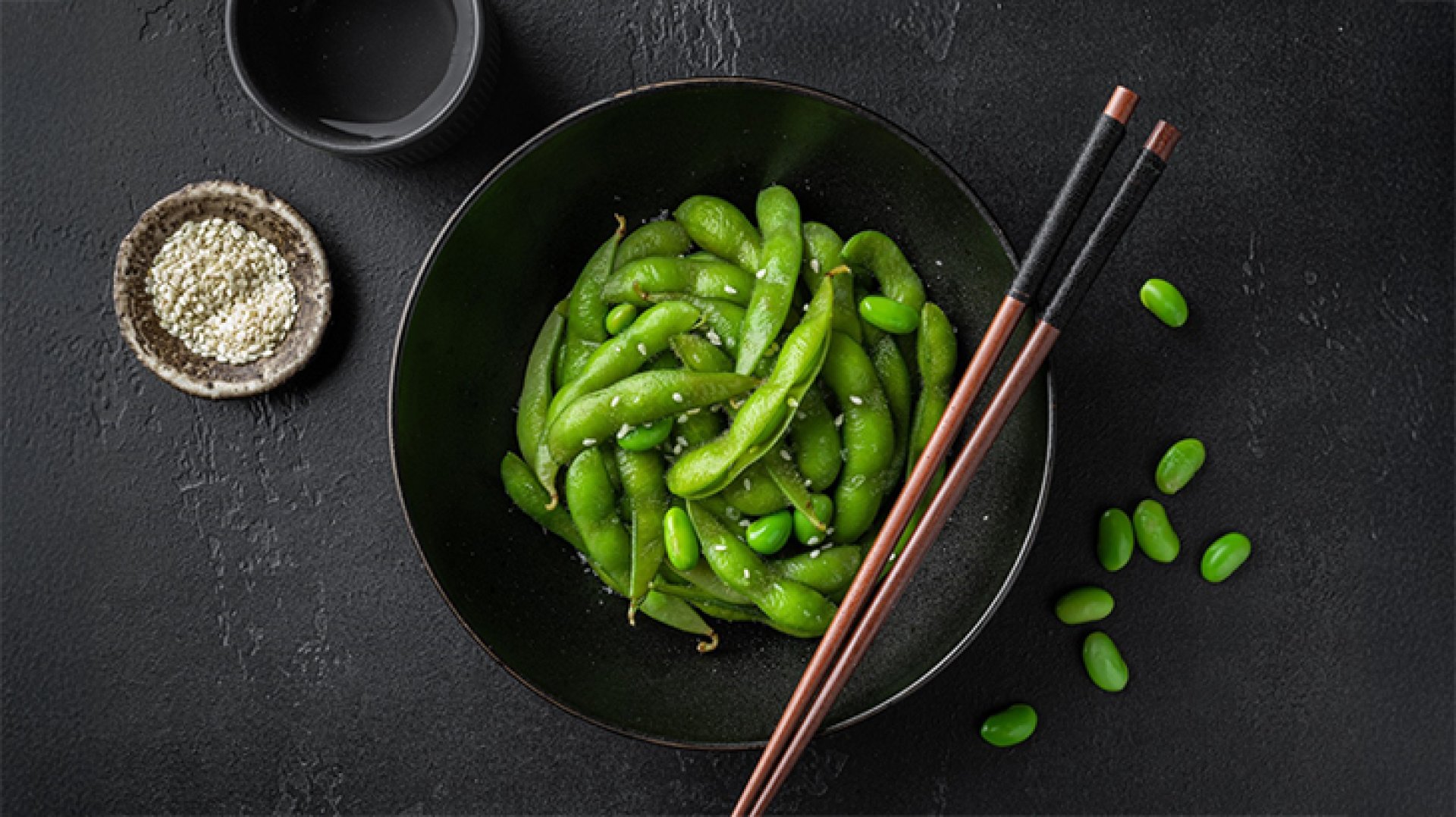Edamame (えだまめ)

In Japanese culture, Edamame (えだまめ), or Japanese green soybeans, have been a widely popular snack since ancient times. Japanese people typically steam or boil them, serving them as a main side dish alongside main courses and miso soup. Today, Rimping Supermarket invites you to learn about this popular snack from the Land of the Rising Sun.
Elevated Young Soybeans (Edo Period: 1603-1868 AD)
Edamame are essentially immature or young soybeans. However, in Japan, varieties have been developed where the pods and beans are twice the size of regular soybeans, boasting a sweet, nutty flavor and a tender texture. Japanese people mostly enjoy them as a side dish or serve them as a snack with beer, Shochu, or sake.
Soybean cultivation has a history spanning thousands of years in East Asia, but the consumption of soybeans in Japan has historical records dating back to the Edo Period (1603-1868 AD). It is said that in the past, soybeans were often used to produce soy sauce, miso, or tofu. However, over time, as Japanese people began to develop soybean varieties, they started consuming them in boiled or steamed forms, leading to the Edamame we know today.
Over centuries, Edamame has been widely consumed throughout the country. One tradition in Japanese Edamame consumption emphasizes seasonality and freshness. Generally, Edamame is typically eaten during the summer, as it is their peak season.
Nutritional Benefits and Global Spread (1855 AD - Present)
Beyond its cultural significance, Edamame offers numerous health benefits. It is rich in protein, fiber, vitamins, and essential minerals such as iron, calcium, magnesium, potassium, zinc, vitamin A, vitamin B6, vitamin C, vitamin E, and vitamin K. These nutrients contribute to lowering cholesterol, controlling blood sugar levels, and helping to prevent and reduce the risk of breast cancer and prostate cancer.
Due to its various benefits, Edamame's popularity quickly spread throughout the country, becoming a popular snack and side dish often served at Izakaya (Japanese pub-restaurants) or sushi bars. It can also be incorporated into various dishes, such as stews, stir-fries, and tempura.
Edamame was first recognized in the United States in 1855 AD, as it was mentioned in the book The Soybean by CV Piper and Joseph W. Morse. This book detailed the nutritional value of Edamame, leading to its popularity in the United States and gradual spread to various countries in Europe and Asia.


